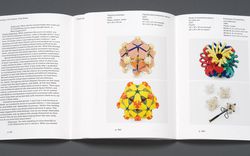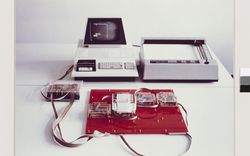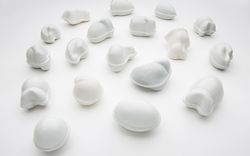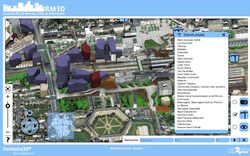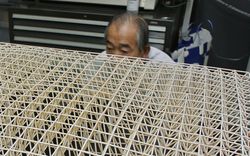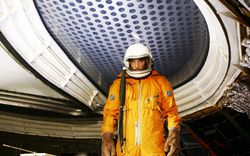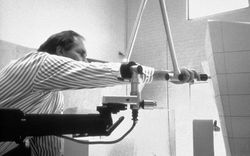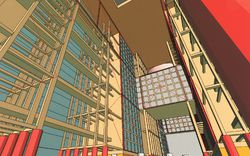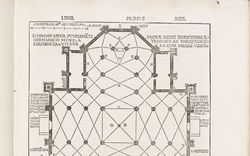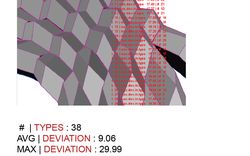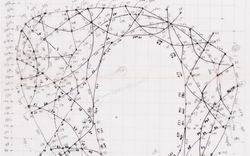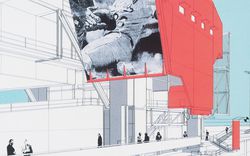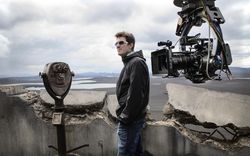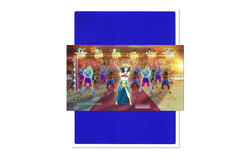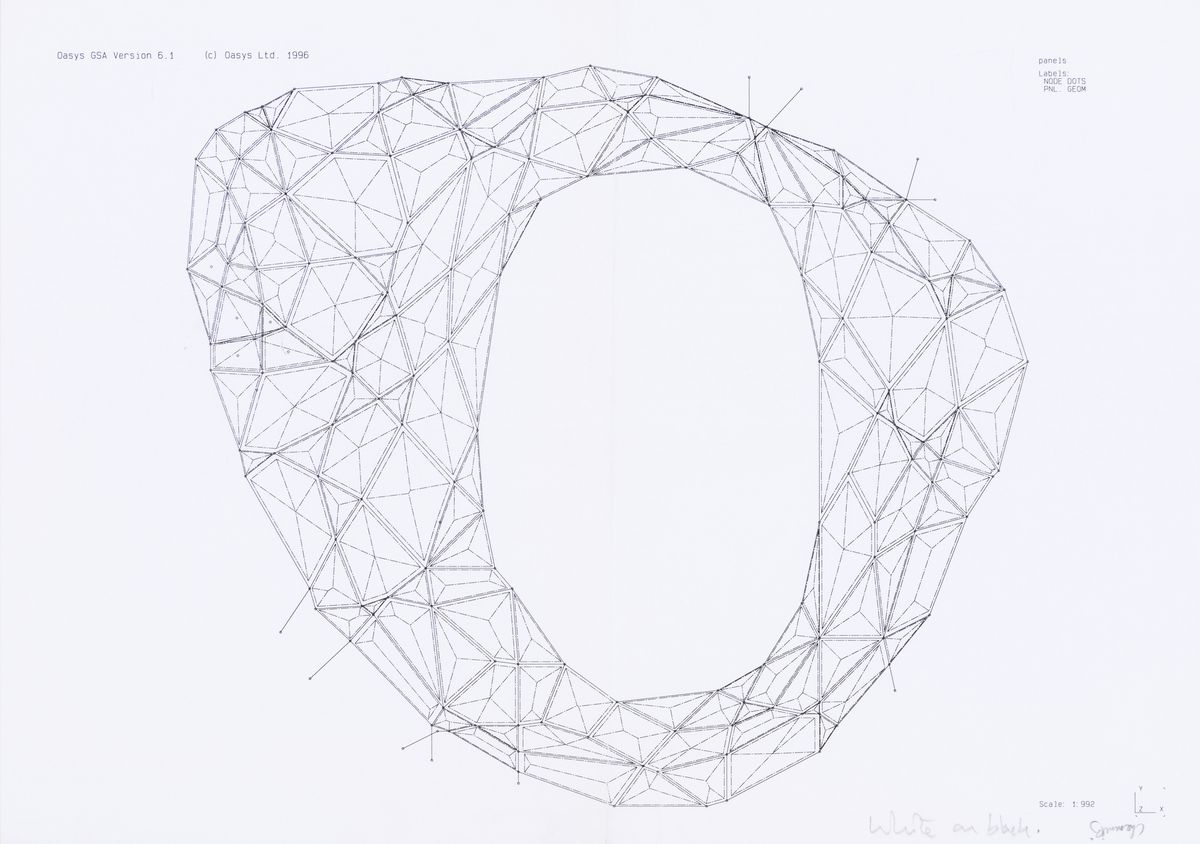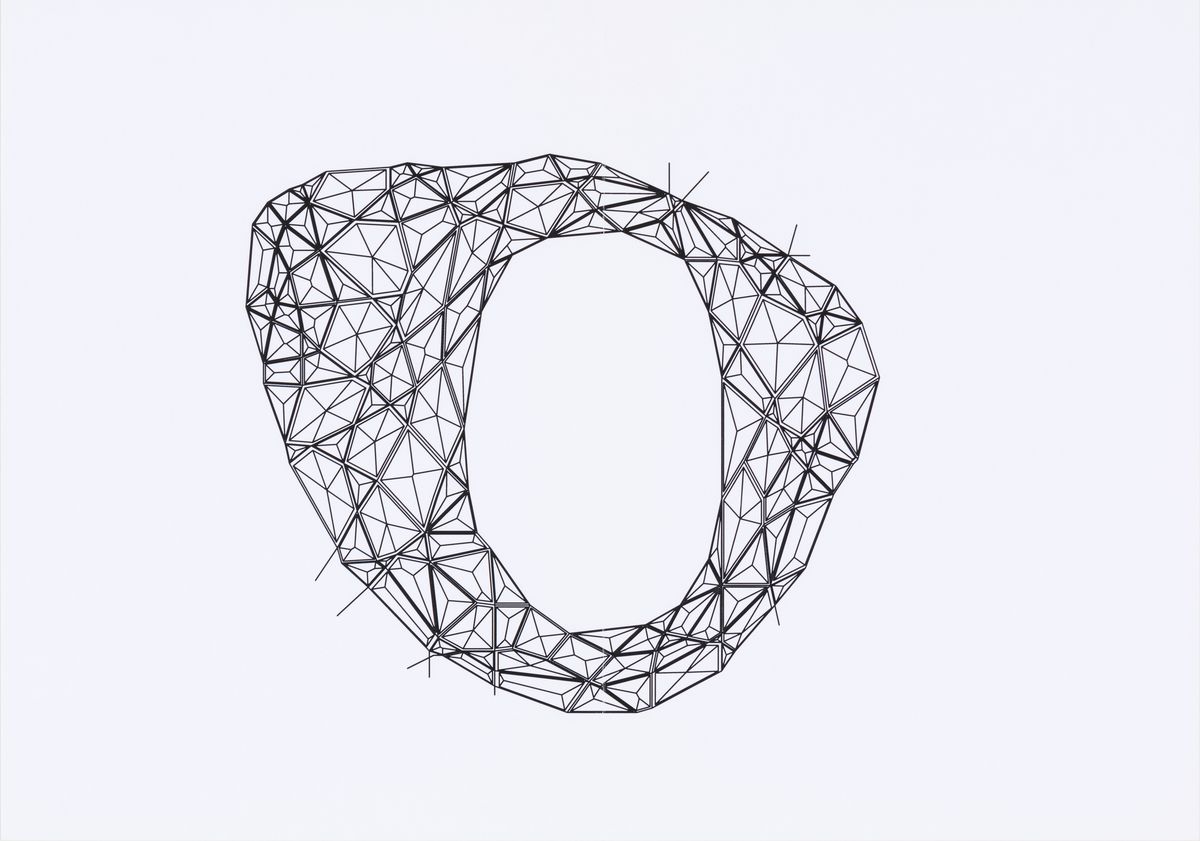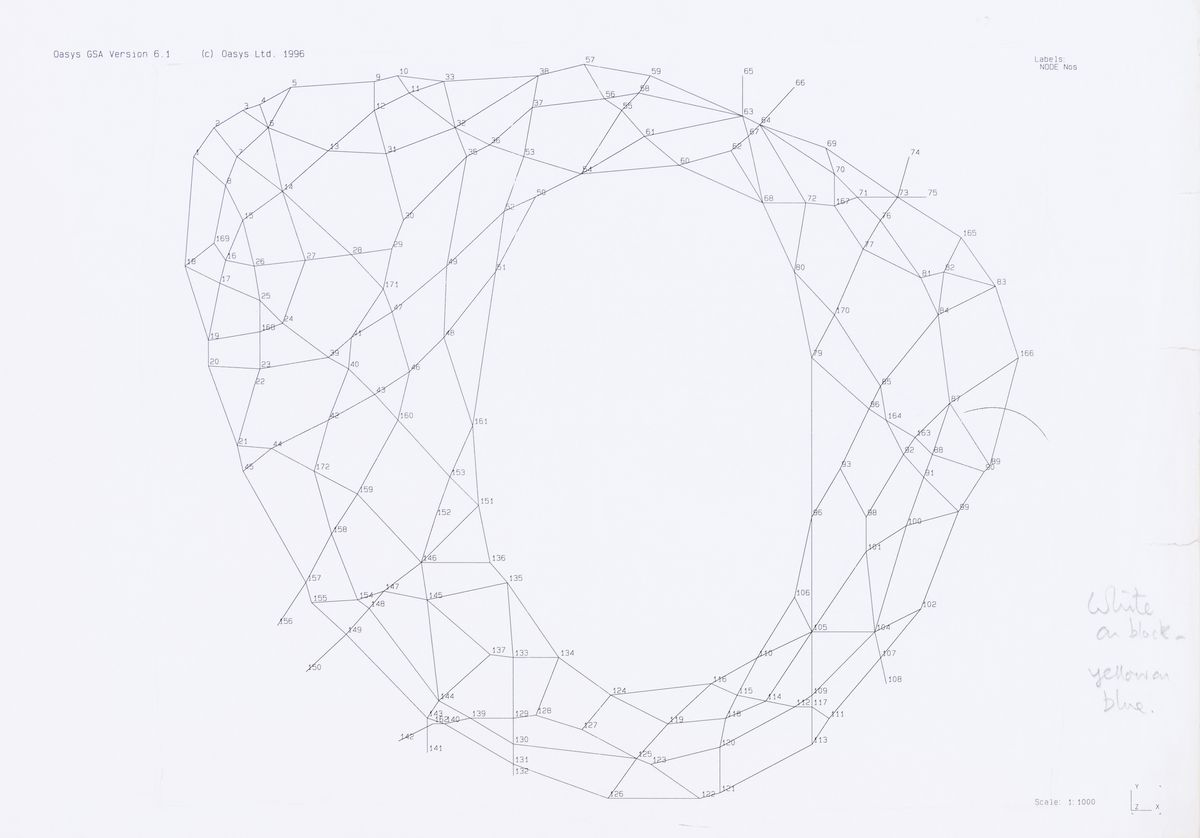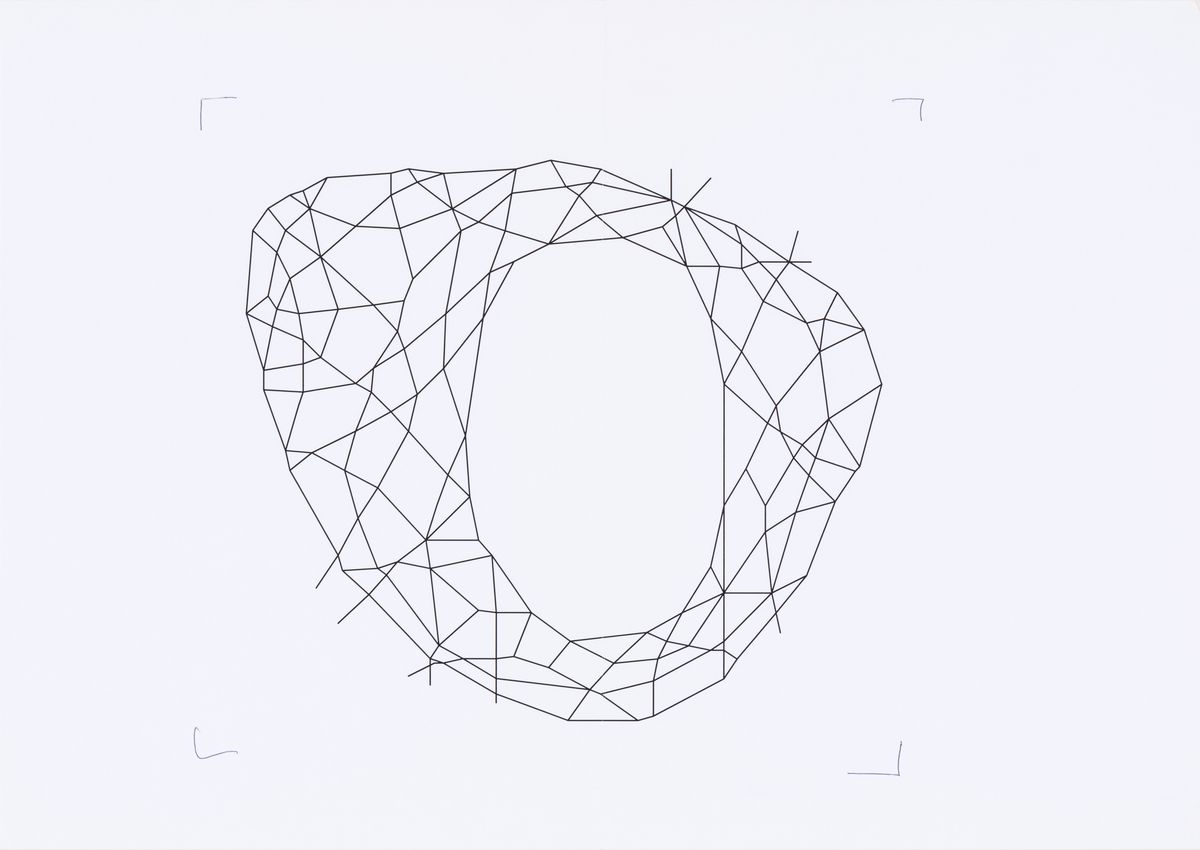Cloud and Forest
A conversation between Greg Lynn and Cecil Balmond
- GL
- The Chemnitz Stadium project has had a lot of influence since it was published in 1998, but it doesn’t have as high of a profile as it should have, in my opinion.
- CB
- You’re right. It was a strange project. When I gave lectures at the time, there would be only two slides of the Chemnitz Stadium in the group of 150 or 200 slides that I would show in an hour and a quarter, but people would always come up to me afterward to ask about the project, because it was so radical. It was one of those seminal projects of learning about chaos and the digital and all sorts of things, and it was before my real algorithmic phase. Much of the work was done by hand. It wasn’t super-digital, but without computers we wouldn’t have been able to do it, either.
So, it was a strange, pivotal project for me, moving from classical techniques to digital techniques. I understood with a shock, a gut-wrenching shock, that all the stuff I had read about and played with on chaos theory, indeterminacy, and the non-linear was evident in the simple experiments I did, like running the cycloids. I thought it was the craziest thing I had done for a while. I was up against a very sober German jury of really eminent people, and I thought they were going to kill it, but they raved about it. Unfortunately, during those years all the money went to building up Berlin, and so this project never had a chance. - GL
- What was the role of the digital in the project, both at a technical level and in a theoretical way? To me, it looks like finite-element analysis was being used as a design concept rather than as a rationalization of some other kind of structural concept.
Read more
- CB
- Correct. Peter Kulka, who was an established German architect doing parliament buildings and so on, and a young architect, Ulrich Königs, reached out to me and I went to Cologne for a day-long meeting. What intrigued me was when, in a naturalistic way, they projected an idea: let’s have a stadium that’s a non-stadium, as it were. Let’s have a stadium that’s trees and clouds and forests. And I liked the literacy of that. Also, I knew that this would liberate us from any conventional idea of a stadium. I said, “Yeah, let’s do this, then.”
We played about with it, and got nowhere, frankly. I went away and then came back to Cologne two weeks later, and time was running out. The competition date was looming. We still weren’t getting anywhere, so I said, “Look, leave this with me. I’ll go into another room. I need to have a deep think about what’s going on here.” And then it hit me, basically, that what was happening was that the perimeter of the site was a formal condition. We wanted a clear, floating cloud for a roof, we wanted forests for the columns, and we wanted a saddle-shaped bowl for the people to watch the games from.
So, what do you do? You basically need three floating agendas that don’t connect in any way. It was a formal approach, and then the move was realizing that the only way to solve this would be to have a support ring around the entire edge of the site with no backspans, which was a very strange thing to do. At that time, I was concerned about a roof sailing off into space somewhere, which would have architectural qualities and a narrative—how do you do that? I had no idea, but I just stuck to my guns and drew the perimeter, which was the edge of the site, the edge of the building. I took the building right to the edge. It looks as if it should cover the entire site. So there was no site left. From there, then, I thought, “How on earth do I support anything?” There’s only one way, which is to launch into space. Literally, I took the word launch as one arc. Up until that point, it was a formal gesture in the classical tradition, solving an architectural problem. So I did the arch. I could have stuck it onto a centre point, like Norman Foster and others would do conventionally. But I knew that would put a lot of stress on the ring and it would become huge, so I thought we should just curve into space and come back. Then we did that a second time.
This was probably the first project I did that generated so many reciprocal grids. But, anyway, one overlap over another, and I suddenly thought, “I’m into some kind of informal theory of mine, where things are not distinct, things are not clear, and there is no category. We’ve got to see some overlapping.” Then computers started tinkering my head. I thought about how I could compute this thing. I think I had just read a book on Greek mathematics, and the word cycloid popped into my head. Then I wondered what would happen if I generated a circle—a disc—that would run along a horizontal layer, and I just put a couple of holes in it.
I wanted to get a projection in the night showing the light running through it, but I didn’t have a darkroom so I didn’t do that. I went to the computer and I just ran a point trace. To my astonishment, I did only three or four pair adjustments. I had one fixed point that gave me the perfect cycloid, but then I had another point, and soon the traces started to overlap. What really blew my mind was, still three or four days into this thing, I got a scatter and a complete breakdown, a confusion of lines, total chaos, and at another point at the second hole in the disc, I got this amazing symmetry on the horizontal.
So, I thought, here it is, right in front of me: two little dots on the disc that I’m rolling figuratively on the computer are giving me chaos, or order in some way. I thought, that’s it. That’s the solution. I told Königs that I was going to go for this. I thought it would be a kind of fractal cloud. With one of my young guys, who had just come from college, I ran this on the edge, a disc that ran the edge of the site, looping things around, basically. After two or three rounds, you’ve got a mess of spaghetti, depending on where the dots were. I thought that was the way to go. I put aside all structural consideration. I was looking for configuration, some kind of pattern. I was totally relying on the computer at this point, because I knew I couldn’t draw this in any sensible way; it had to come out of the computer. So I had to trust the computer as a design tool and give it intelligence. At that time I couldn’t move from a computer-generated curve into a structural analysis program.
I then set a limiting factor, what’s called a fitness criterion. That’s when it got really interesting, when I suddenly realized that this thing that I just played with in an abstract way was becoming some kind of bio-machine. So I then took one strand, one hole, and had one kind of strand thickness. The other hole had another kind of strand thickness and the two strands interacted as they overlapped, gathered strength, and connected. This was given a fitness criterion, such as at the middle it can’t deflect more than three feet and, if it does, it will rewind itself and adjust the diameter of the cube going through it.
It was like a weaving machine, which was exciting. But then I realized I still didn’t have a pragmatic kind of roof. To add to the complexity, I took the inner curve, which would be open to the air of the hip of the roof, and ran a circle. The cycloid was then running between two varying railway lines. You could take railway lines, widen their spacing, and turn them around each other. One tip would go around the back of the site and the other tip of the cycloid, the disc, would go around the inner part of the ring, so it expanded and closed. And that was a very exciting moment, when I had a disc that was “breathing,” so to speak, moving around and spinning the two spaghetti points. That was a magical moment, and I realized then that there were sufficient lines of material to become structure and, in the end, I think I settled for three turns of the disc. I manifested them as curved members, and then realized that would cost a lot to make, so then came another pragmatic formal move, in which I straightened the curves out into jerking lines.
That produced the most beautiful roof in the white-and-black slides that I used to show in my lectures. They really brought gasps from the audience. The other wonderful lesson I learned here was that if I took a plant stem and cut it and looked at it with a microscope, the kind of cellular capillaries in that stem were very similar to that roof. Each of the curves was trapping cells, and the hole in the middle was the hole up the shaft of the plant.
So, suddenly, everything was there. There was the underlying order algorithm that led to a system of configuration at a two-hundred-metre scale across the site that became giant tubes and giant structure. If it were microscopic, it would look like the walls of a cell that I had cut through and magnified. It gave me this utter conviction in 1994 or 1995 that I had found proof of something I believed in, something that I had an instinct for and that I had been chasing. I never looked back from that moment. Although I later worked on more formal projects, like the Maison à Bordeaux, this was where I was headed and this is where my current work is—in a nest of algorithms.
And then there was another great test for me: If this is the cloud, where is the forest? I suddenly realized that all I had to do was to get simple, pragmatic points on the ground that avoided the seating, and just lean them toward any convenient intersection point in the roof. To get the scatter, I took a square grid, fixed the grid points, duplicated the grid, and rotated it. That simple formal move gave me a chaotic distribution. Suddenly we had it all. Kulka and Königs worked out the lower saddle—the yellow disc in the models we made, and I did the roof and the forest. The roof structure flowed like a river around the stadium. So the whole thing was subversive to any traditional take on stadium, and I loved it and was delighted when we won the competition. I was gutted when we found they were not going to build it. - GL
- Who was on the jury?
- CB
- Well, the engineers on the jury were top flight. It was Stefan Polónyi and Schlaich Bergermann. They were the best in Germany. There were some architects too, but the jury’s emphasis was really on construction logic. I thought they wouldn’t go for my radical take on this, but they loved it and actually complimented me later. Polónyi liked it a lot. He was an interesting guy. He did the Netherlands Dance Theatre project with Rem Koolhaas in The Hague. He gave Rem the idea of the twisting roof, which was very cunning.
- GL
- Did you submit any of the calculations with the competition? Or did you just submit the design?
- CB
- I think it was just the design. The jury might have asked for some rationalization or something, but to them I think it just felt so right. To a guy like Polónyi, it was obvious that it worked.
- GL
- Do you think that was in the proposal? Or did you also show some of the algorithmic process of its generation in the competition?
- CB
- I think I did show two basic sketches—hand sketches, probably—of the computation technique, for proof that this wasn’t just done by guesswork. This was analyzed by some of the bigger brains at Arup. So, for sure it worked. That’s what I wanted to be sure of.
- GL
- Did you use this kind of procedural and algorithmic approach in earlier, more conventional projects with digital tools?
- CB
- Yes, I used an algorithmic approach for the roof in the Arnhem Centraal Station project by UNStudio. That was a very daring algorithm in which the entire building came out of the one move. The project has now finally been built, but it has been modified a lot. The original thinking was probably the most remarkable algorithm I’ve ever done, in the sense that it tied in all the vertical structure to all the horizontal structure, through three different levels of program: a basement car park with a big grid through a concourse, a railway station that had no grid but free-flying space, and a developer’s office building above where the grid shifted down to thirty feet.
That all came from one move. But, to be honest, it wasn’t a computed algorithm; it was more of a free-flow idea that a generative line could do all of this in one go without losing its logic. But then that translated more directly into tectonic form. I was playing with fluid notions of space and time. I was interested in time evolving, and Chemnitz was the first proper test of that. I would get different networks on the roof as I ran the algorithm. In that sense, it was a seminal project in which I was running time with algorithm, rather than algorithm inside space. - GL
- And so when you were using software to make this kind of weaving machine of relationships, were you doing that in structural engineering software or geometric design software?
- CB
- We were just scripting it ourselves. We did it from scratch. You’ll laugh at this, but we tested it with Excel spreadsheets: testing various ordinates on the curve, and then plotting with what I call a finite-difference method. It was a rough-and-ready approach in different media. I didn’t trust what we were doing and I wanted to be sure that the curves were smooth, and the Excel tested that. I’ve taken all of this further now, in later work, but it was all there in Chemnitz.
- GL
- How did you all find each other? I know Königs was at the Architectural Association.
- CB
- Yes, Königs was at the AA, and I had been teaching there. Königs was part of OCEAN at the time. He rang me and said, “Hey, we’ve got something. Would you be interested in a competition with us?” I was a bit worried about Kulka. He was more established and seemed like a conservative guy. But to his credit, once I explained this whole process to him, he really took to it. At the time, I was labelling my approach “informal.” My book Informal came out in 1998, and I started writing around 1994, after a lecture in Berlin on the nonlinear. Anyway, Kulka said, “This is new. I’m too old for it, maybe, but I like it.” He was very much the guy who called the tunes. Königs was a young guy working with him. We were a great team.
- GL
- And that was when Charles Jencks and Jeff Kipnis were organizing the Architecture and Complexity conference. There was a lot of energy around the digital at the AA at that time, right?
- CB
- Right. Brian Goodwin was there, and so were some people from the Santa Fe Institute.
- GL
- It’s interesting that Königs was the one who connected you with Kulka.
- CB
- Kulka wouldn’t have known about it otherwise. I think Rem knew Königs, too. There was a coterie of young guys around Rem. At the time, I think Königs liked the freedom of the solution coming our way, and that we could work in a malleable material way and in totally a non-formal way. But for me this was fundamental proof of the power of the digital. And, more importantly, it was proof of the power of abstract starting points leading to massive potential through the computer. It was a design process to the digital. It wasn’t just an application of content; I was learning through the process.
- GL
- And how did the digital change your role in projects, if Chemnitz was a template for future ways of practising? It’s very interesting to see your work aligned with digital technologies and the possibilities they bring.
- CB
- Well, I think it pushed me to define space in new ways. And I don’t think I ever looked back afterward. I saw myself as forming networks in space that could be framed by right angles, or that could be complex and interwoven. I realized that the digital gave me a narrative that was different from a formal approach. Following a formal method, I would have been back-analyzing or post-rationalizing to say, yes, this is what it meant. Digital tools led me to a new meaning. Chemnitz was an experiment. There was a eureka moment when I rolled the cycloids around. I don’t know how I came to that idea, but that did it. And when I found these two dots, slightly varying in every position, I knew this was a powerful way to think.
- GL
- It’s interesting to see all of this before computer power. Someone would write down a very succinct code that unfolds into an entire project. The way you described the rotating discs, drawing the spaghetti lines of structure—this is really an era in which you had to have a clear and efficient generative idea like that because you didn’t have unlimited processing power.
- CB
- Exactly. It was not anything like we have today. Now I’m working on something with four nested algorithms, one feeding off the other, and each sophisticated. Back then our way of working was primitive. It felt like pioneering, like discovering a new land as we kept going.
- GL
- Are you still in touch with the people who were working for you, who were doing some of the programming?
- CB
- No. It just happened that these two people were clever and fresh. But I realized that, in order to do projects like Chemnitz, I needed a new way of working. So I formed my own unit, a breakaway from the traditional Arup. I had my own architects and engineers, and I hired a game theorist and a quantum physicist from Cambridge. This quantum physicist wrote to me to ask me for an interview for a job. I warned him that we were dealing with big, tangible things, whereas he was dealing with microscopic physical entities. But he proved to be an extraordinary addition to the team, because he came with no prejudice. So, around him and these other people I put together this elite team: what I called the Advanced Geometry Unit, the AGU, in a nod to Plato and Pythagoras. I thought this was a new kind of geometry. With the AGU we did all kinds of work across scales: the Twist Building and other things. All the work with single generative lines and algorithms was being done with this team, and subsequently in my new studio, of course.
- GL
- Right. I did get the sense that Chemnitz was the template for the AGU.
- CB
- Without Chemnitz, I don’t think the AGU would have happened in the way it happened. You need something to convince yourself and with that project I realized I needed a larger body of people to do what I wanted to do. Hence the game theorists and the quantum physicist were brought in. We had a great time. The guys were so fast and so good—they were just coming at me with ideas from all over. I’d come up with an idea, but then they would come back with five. These were brilliant times, just wonderful times.
The Chemnitz Stadium project was included in our 2016 exhibition Archaeology of the Digital: Complexity and Convention. It is also the subject of an upcoming digital publication in our Archaeology of the Digital series.
